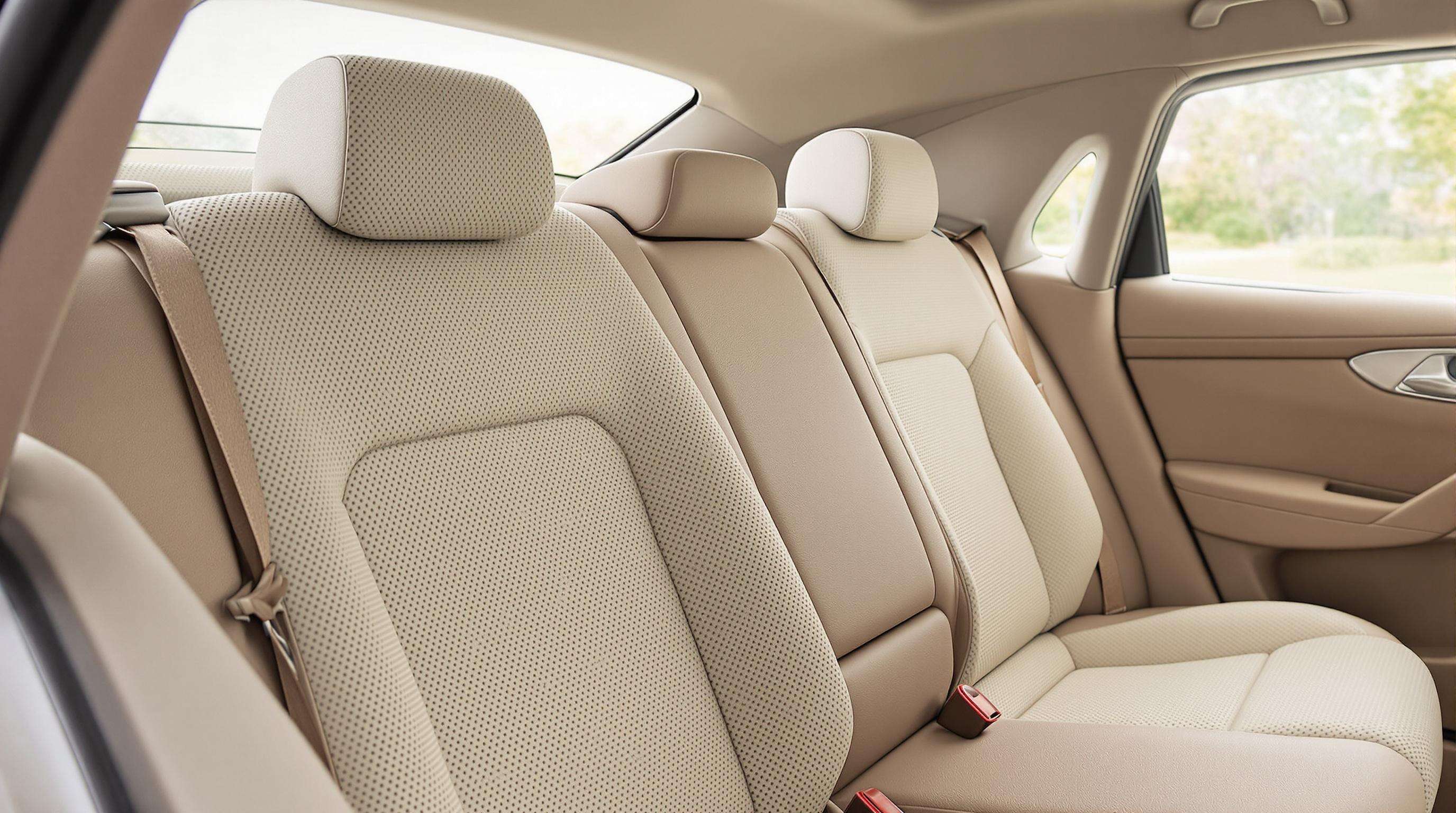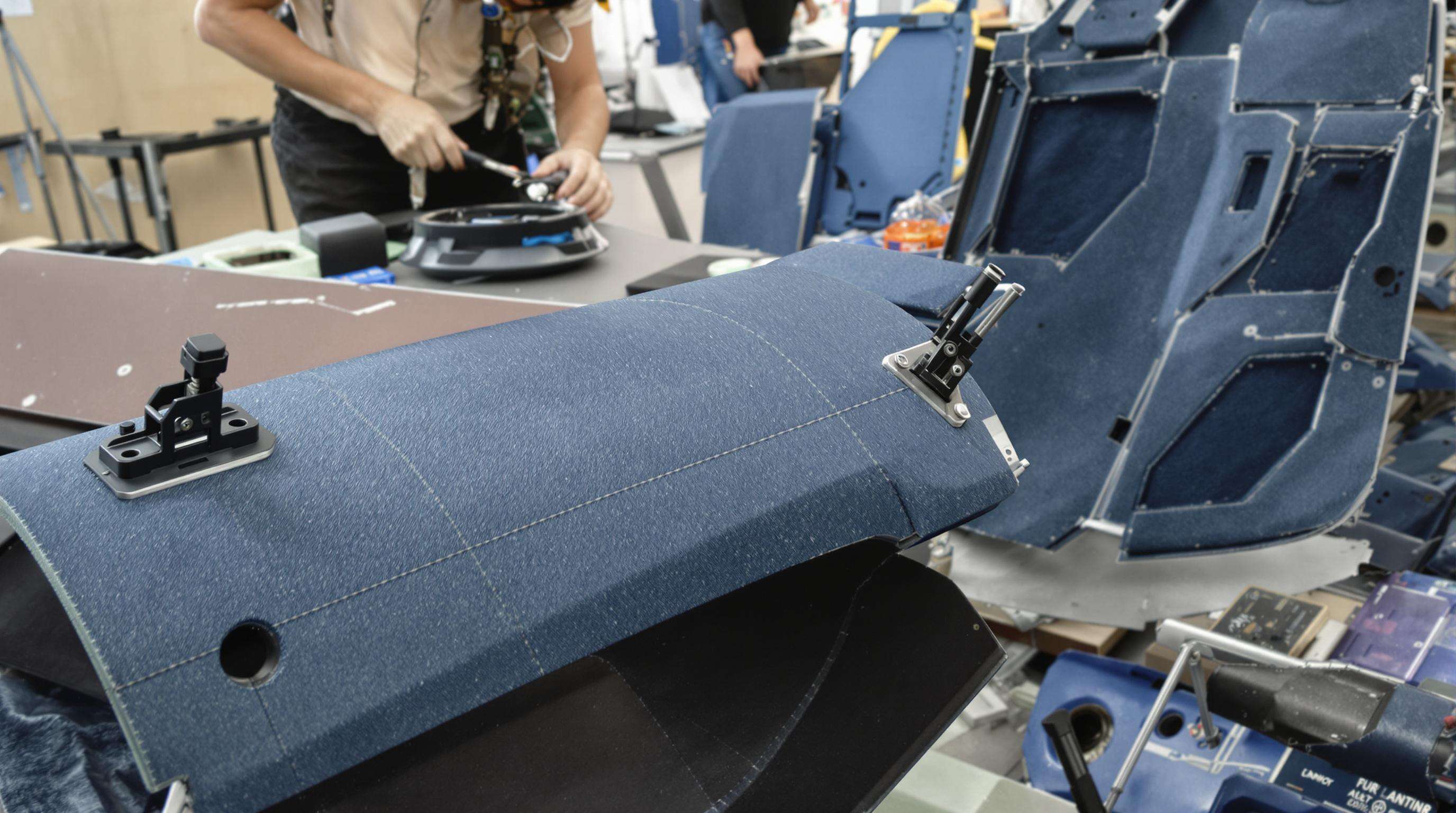
Since 2020, car manufacturers have been moving away from petroleum based plastics quite a bit actually cutting down their dependence by around 28 percent according to Future Market Insights data from last year. These days, many automakers are turning to castor oil derived polyurethanes instead of traditional synthetic foams for seats. The result? Pretty much the same level of comfort but with roughly forty percent fewer emissions over time. And don't forget about coconut fiber composites either. They're showing up more frequently in places like door panels and dashboard components because they weigh less than conventional materials while still resisting mold naturally without needing chemical treatments.
Leather made from mushroom mycelium is becoming quite popular these days as an upscale substitute for real animal skins. Production requires about 34 percent less water compared to conventional methods, which is pretty impressive when we think about environmental impact. Moving on to hemp fibers, they're being incorporated into car interiors like headliners and those storage areas above the back seats. These materials absorb noise around 20% better than what we typically find in cars today. And then there's bamboo trim components that manufacturers can now shape into complex designs without needing plastic. The stuff bends and holds up well because of how flexible and strong it naturally is, something designers have started taking advantage of in recent years.
Recent innovations enable 72% recycled polyester fabrics to match virgin materials in wear resistance and colorfastness. Monomaterial construction techniques allow full recyclability of multi-layer interior components—a critical advancement given that 54% of automotive interior waste currently ends in landfills (Ponemon Institute 2023).
Mercedes-Benz’s 2024 EQS sedan features door panels made from 94% recycled ocean plastics and seat bolsters woven with flax fiber. The design reduced cabin material carbon footprint by 31% while maintaining luxury aesthetics, proving sustainability doesn’t require premium compromise.
Sustainable materials outperform conventional options in key metrics: mushroom leather shows 42% higher abrasion resistance than synthetic alternatives, while bamboo-reinforced composites reduce component weight by 18% without sacrificing durability. These innovations enable automakers to meet 2025 EU recycling targets while enhancing cabin functionality.
The integration of vegan and leather-free alternatives represents a transformative shift in automotive parts innovation, combining ethical sourcing with uncompromised luxury. Leading manufacturers now prioritize plant-based and synthetic materials that replicate traditional leather’s tactile elegance while aligning with sustainability goals.
Leather alternatives made from mushrooms, cactus plants, or even recycled plastic are now giving that soft feel and elegant look people want in luxury car interiors. What's great about these new materials is they don't use any animal products but still maintain that sophisticated appearance. Plus, manufacturers can customize them with different surface textures ranging from dull matte to shiny gloss finishes. According to recent industry findings published last year, major car brands have seen their carbon footprint drop by nearly two thirds after making the switch to these plant based seat coverings. The 2023 Sustainable Materials Report actually highlights this significant environmental benefit.
Modern eco-leather surpasses traditional counterparts in scratch resistance and UV stability while matching its lifespan. Lab tests show synthetic alternatives withstand 40% more abrasion cycles than bovine leather. Aesthetic versatility further differentiates these materials—engineers can embed microtextures or color gradients impossible to achieve with organic hides.
One luxury brand recently redesigned its flagship sedan using 100% recycled PET bottle fabric for seats and hemp-based composites for trim. The initiative diverted 12,000 kg of plastic waste annually while maintaining the tactile warmth associated with premium interiors.
70% of luxury buyers now prioritize sustainability as a key purchasing factor (2024 Automotive Consumer Trends Study). Brands leveraging vegan materials report 22% higher customer satisfaction scores, proving eco-conscious design enhances—rather than compromises—market desirability.

Car companies are changing what we expect from luxury interiors these days. Some automakers have started making car parts from plastic they pull out of oceans and old soda bottles people throw away. Take the new 2025 model from one big name in the business - it has door panels and seats made from fabric woven with recycled ocean trash. The company claims their special treatment process makes these materials just as strong as brand new plastic would be. According to some research in the field, using this kind of recycled stuff actually cuts down on energy needed for manufacturing by around half compared to regular production methods. And speaking of awards, this particular model recently won the Sustainable Innovation in Design Award for 2025. What makes it stand out is how they manage to turn broken bits of ocean garbage into high quality car fabrics while still keeping that luxurious feel drivers expect.
Old fishing nets and leftover denim from factories are getting second chances as soundproofing materials and fancy interior trims in high-end cars these days. When they take nylon from abandoned ocean nets and break it down through this chemical process called depolymerization, they end up with carpet fibers that last about 30 percent longer than regular synthetic stuff. Meanwhile, those little pieces of old jeans get squished together to make light weight panels for car ceilings. Car makers really care about where their recycled materials come from now. They're using blockchain technology to track every piece back to its source, which apparently makes people trust them more. Some studies say this transparency boosts consumer confidence by around 42%, according to research published by the Circular Automotive Consortium in 2025.
Automakers have managed to cut down on carbon emissions during production by around 31% per car since 2020 thanks to their move towards circular material usage. When they take those leftover industrial plastics and turn them into things like dashboards, it keeps about 740,000 metric tons out of landfills each year. That's roughly the same as taking 160,000 gas guzzlers off the road completely. Looking ahead, the market for circular materials in cars is expected to grow to $74 billion by 2034. Engineers working with materials are now creating new types of chemically recycled plastic that can pass tough tests for fire safety and volatile organic compounds, making them suitable for high end interior parts where quality matters most.
Luxury automotive interiors now prioritize sustainability without compromising elegance, as manufacturers reimagine automotive parts through eco-conscious innovation. A 2023 McKinsey analysis revealed that 66% of premium vehicle buyers value sustainability as highly as traditional luxury features, driving brands to adopt cutting-edge materials and design strategies.
Bio-based polymers, recycled synthetics, and organic textiles are replacing conventional plastics and leathers. For example, coconut husk composites reduce dashboard weight by 15% while maintaining structural integrity (Green Materials Institute 2024). These advancements enable sleeker contours and lighter cabin architectures previously unattainable with petroleum-based materials.
A top luxury car maker recently rolled out electric vehicles with door panels made from old fishing nets and 3D printed interior parts using recycled aluminum scraps. The company claims this green initiative cut down on factory waste by nearly a third, around 32 percent, and also made the car cabins quieter inside by about 20% better than standard materials. What's interesting is how the designers managed to make these eco-friendly choices look good too. Instead of just being functional, the sustainable elements actually contribute to the overall aesthetic appeal of what is traditionally considered a high-end product.
| Material | Comfort Rating* | Style Versatility | Carbon Footprint Reduction |
|---|---|---|---|
| Mushroom Leather | 9.1/10 | High | 68% |
| Recycled Polyester | 8.7/10 | Moderate | 54% |
| *Based on 2024 Luxury Automotive Comfort Index |
Advanced knitting techniques allow plant-based upholstery to mimic the supple texture of calfskin, while nano-coatings protect against wear without toxic chemicals. Over 80% of designers surveyed now specify sustainable alternatives for high-touch surfaces like steering wheels and armrests, citing equivalent tactile satisfaction to legacy materials.
Around two thirds of people around the world are starting to care more about green materials when they upgrade their car interiors with premium parts, according to Deloitte's 2023 report. Why? Well, folks just know more about climate issues these days and want what they buy to match their beliefs. Most of this change is happening in Asia and the Pacific region, where almost half of all sales for sustainable car materials come from. Places like China and India are really driving this because cities keep growing faster and governments there have pushed harder on reducing emissions over recent years.
Around 72 percent of fleet managers are letting sustainability shape their buying decisions these days according to recent surveys. When it comes to actual impact numbers, auto parts crafted from recycled plastic materials can cut down on supply chain emissions by roughly 34%, as noted by the Circular Economy Institute back in 2024. Car manufacturers have also noticed something interesting - companies that offer interiors with certified carbon neutral components tend to keep their customers longer, about 27% better retention rates overall. Looking at broader industry trends, research published by the Sustainable Manufacturing Market shows that automotive uses account for nearly 30% of all green manufacturing income right now. This clearly demonstrates that being environmentally responsible isn't just good for the planet anymore, it actually gives businesses a real edge in today's competitive market landscape.
Car manufacturers are transitioning to sustainable materials to reduce their carbon footprint, enhance performance, and meet regulatory recycling targets. Sustainable materials often require less energy for production and contribute to overall emission reductions.
Examples include mushroom leather, recycled ocean plastics, hemp fibers, coconut husk composites, and bamboo trim. These materials provide durability while reducing environmental impact.
Sustainable materials can enhance vehicle performance metrics such as weight reduction, abrasion resistance, and noise absorption. They often equal or surpass conventional materials in functionality.
Yes, a growing number of consumers prioritize sustainability in their purchasing decisions. Industry studies indicate that eco-conscious design enhances market desirability and customer satisfaction.
Sustainable materials allow luxury carmakers to maintain comfort and aesthetics while reducing environmental impact. Innovations enable new design possibilities that align with premium standards.

Copyright © 2024 Shenzer Automobile - Privacy policy